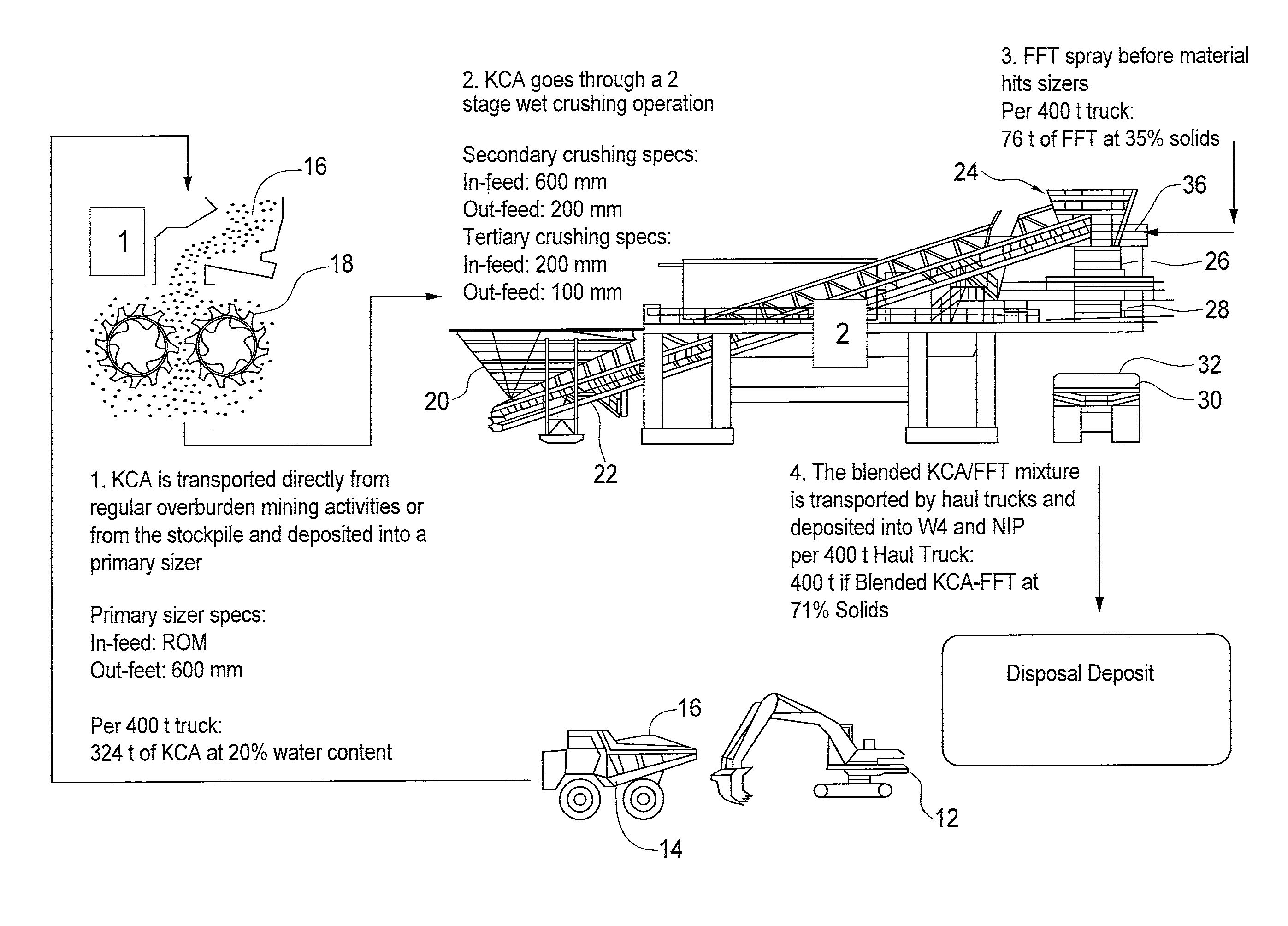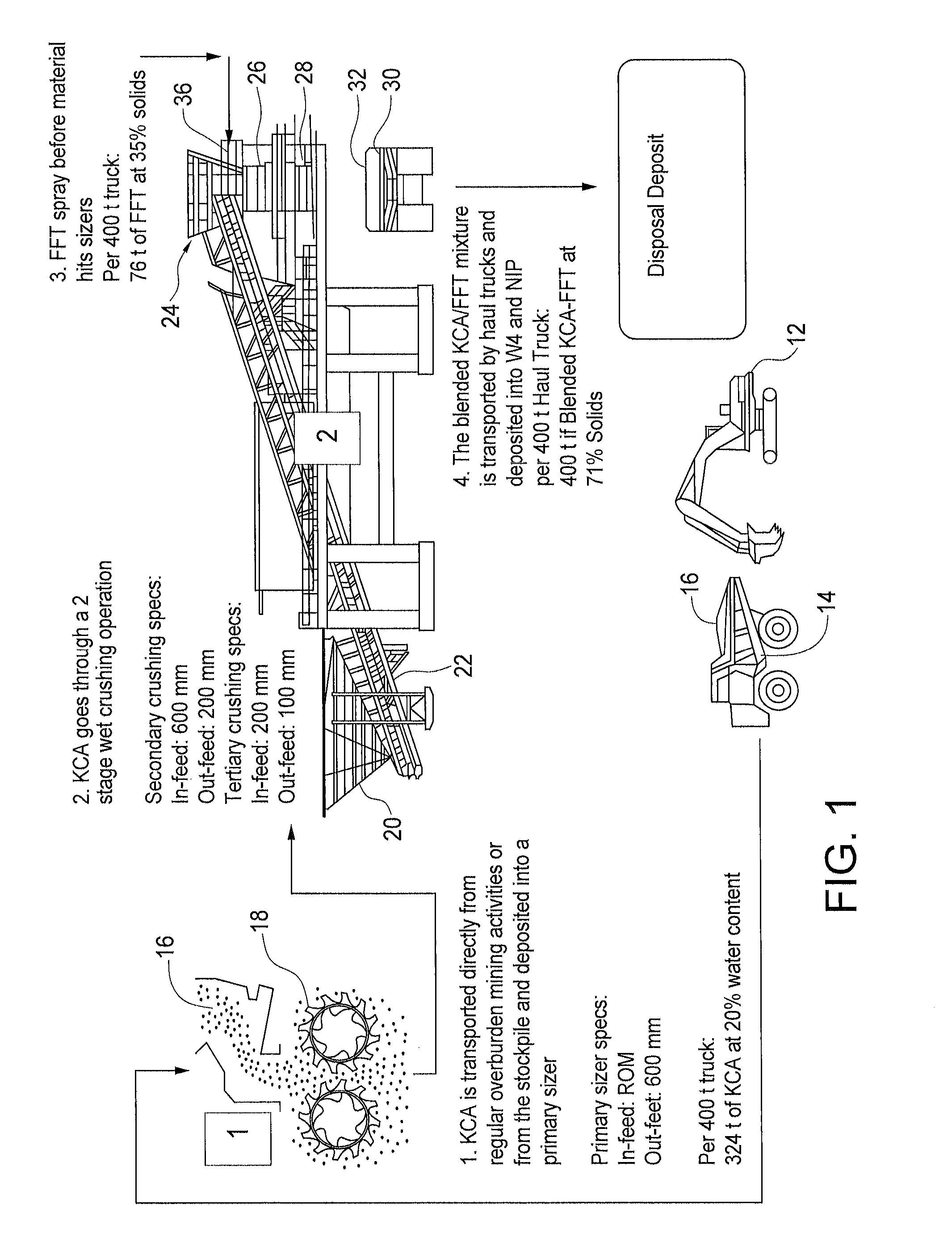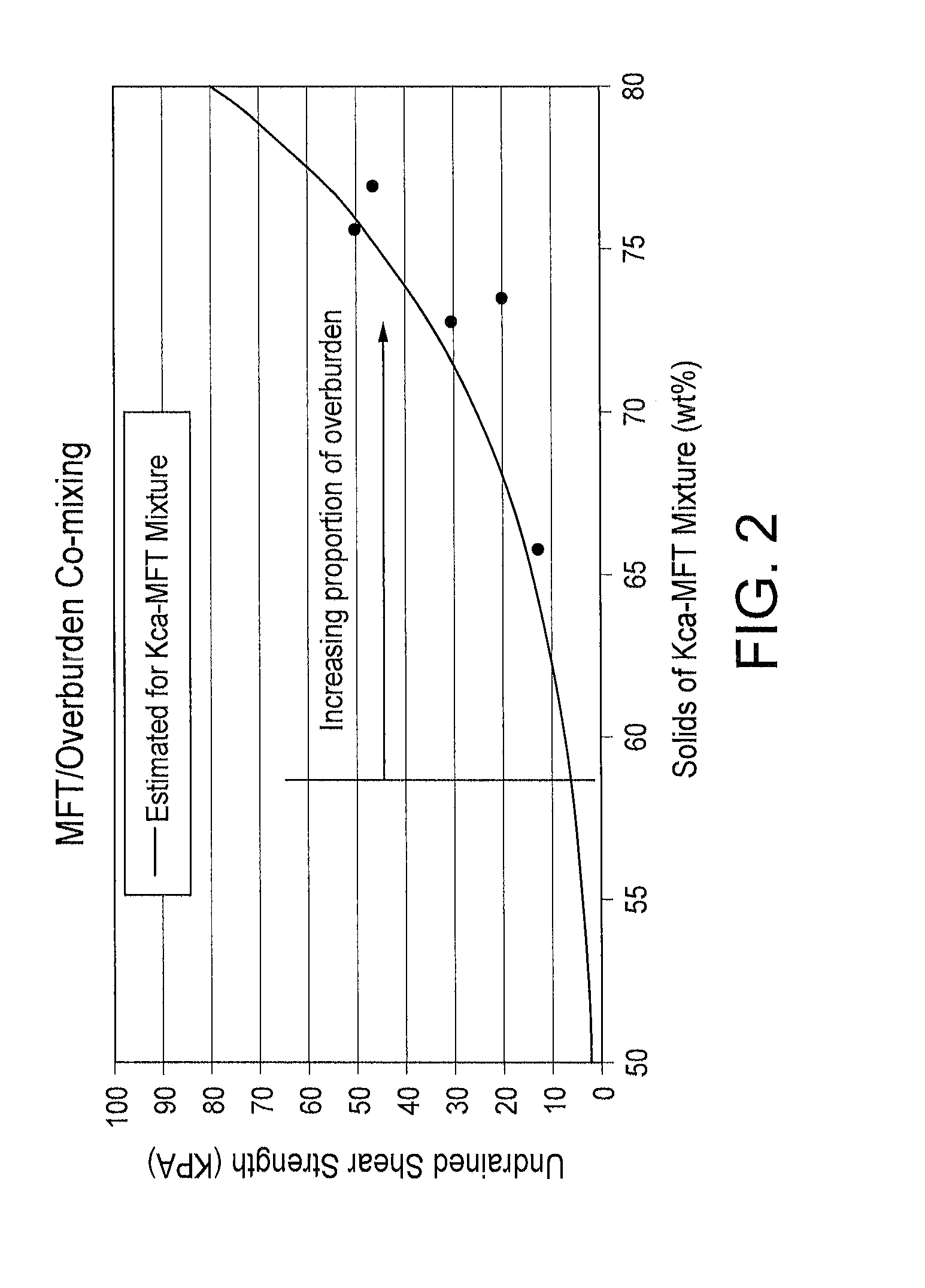Overburden/tailings mixtures for engineered tailings deposit control
a technology of overburden and tailings, applied in the field of dewatering oil sands tailings, can solve the problems of limiting the options for reclaiming tailings ponds, and achieve the effects of low moisture content, high plasticity, and increased undrained shear strength
- Summary
- Abstract
- Description
- Claims
- Application Information
AI Technical Summary
Benefits of technology
Problems solved by technology
Method used
Image
Examples
example 1
Materials
[0086]The Clearwater Formation constitutes the majority of the overburden (75-85 m thick) overlying the McMurray Formation oil sands (Alberta, Canada) and is formed of several layers. The base layer, Kcw, is shallow marine glauconite with sand interbeds and some clay shale, with an average clay content of 23%. High water retention is observed in the Kcw clay due to its low permeability and high porosity. The Kcw is 3-5 m thick and contains traces of bitumen. The Kca unit is 3-5 m thick, with an average clay content of 50%. With increasing depth, the composition of the unit changes from silty clay to dark grey clay silt. The Kca is characterized as a weak and highly plastic unit. The Kcb unit is 4.5-6 m thick, with an average clay content of 60%, of which the majority is low density smectite. The Kcc unit is 21-23 m thick. Six siltstone layers interspersed with light grey clay silt compose the layer such that the clay content varies from 18-70%. High porosities (36-50%) resu...
example 2
Index Testing of Individual Materials
[0088]Index tests were performed to assess various properties of the shale facies and the FFT (Tables 1 and 2). Bitumen content was not assessed, but included as part of the liquid phase.
TABLE 1TestShaleFFTAs-Received Moisture ContentXXAtterberg limits (with recycled mine water)XXAtterberg Limits (with distilled water)X (tests performedon selected samples)Specific GravityXXOrganic ContentXXParticle Size Analysis (Sieve-Hydrometer)XXConsolidationXSurface AreaXMethylene Blue Index (MBI)XX-Ray Diffraction (XRD)XXEnergy Dispersive X-Ray SpectroscopyX (tests performed(EDX)on selected samples)Dean Stark TestingXBulk DensityXRecycled Mine Water (RCW) TestingN / AN / A
TABLE 2MoistureOrganicContentAtterberg LimitsSpecificContentSample[%]LL [%]PI [%]LI [%]Gravity[%]Kca-123.9117.492.7−0.9 2.803.1Kca-1aN / A115.0N / AN / AN / AKca-216.6138.8116.9 −4.5 2.82Kca-2aN / A130.7N / AN / AN / AKca-315.1121.397.8−8.6 2.78Kca-3aN / A120.8N / AN / AN / AKcb-130.8123.997.94.92.802.1Kcb-1aN / A120.69...
example 3
Preparation of Shale / FFT Mixtures
[0106]Shale / FFT mixtures were prepared to include specific shale facies, shale lump size, and FFT:shale ratio. The mixing process involved one technician placing the processed shale in a large plastic mixing bin while another poured FFT into the bin. A third technician mixed the shale and FFT using a metal spoon and spatula, while retaining the shale lump size and preventing inadvertent compaction. Portions of the FFT and shale were placed in the sample mixing bin in a total of 8 to 10 lifts to ensure thorough mixing. Mixing was completed in 10-15 minutes in a temperature-controlled room. The sample containers were covered with plastic immediately to minimize moisture loss. Each FFT-shale mixture was placed into a test mold (6 mm thick acrylic cylinder having a diameter of 254 mm and height of 178 mm) for vane shear testing. The mixture was placed into the test mold to a height of 152 mm to allow for 25 mm of splash clearance. The mixture was placed ...
PUM
 Login to View More
Login to View More Abstract
Description
Claims
Application Information
 Login to View More
Login to View More - R&D
- Intellectual Property
- Life Sciences
- Materials
- Tech Scout
- Unparalleled Data Quality
- Higher Quality Content
- 60% Fewer Hallucinations
Browse by: Latest US Patents, China's latest patents, Technical Efficacy Thesaurus, Application Domain, Technology Topic, Popular Technical Reports.
© 2025 PatSnap. All rights reserved.Legal|Privacy policy|Modern Slavery Act Transparency Statement|Sitemap|About US| Contact US: help@patsnap.com



